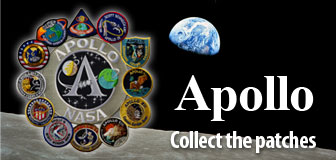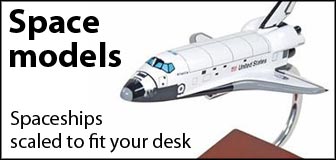PHOTOS: Highlights from Herschel
Europe's Herschel infrared telescope will end its science mission in the next few weeks, and we present a few of the observatory's recent visual masterpieces.
See our full story for details on the mission's end.
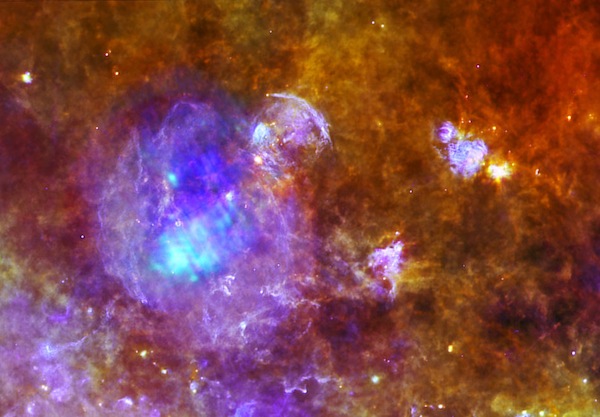
Supernova remnant W44 is the focus of this image created by combining data from ESA's Herschel and XMM-Newton space observatories. W44 is the vast purple sphere that dominates the left hand side of this image, and measures about 100 light-years across. Credits: Herschel: Q. Nguyen Luong & F. Motte, HOBYS Key Program consortium, Herschel SPIRE/PACS/ESA consortia. XMM-Newton: ESA/XMM-Newton
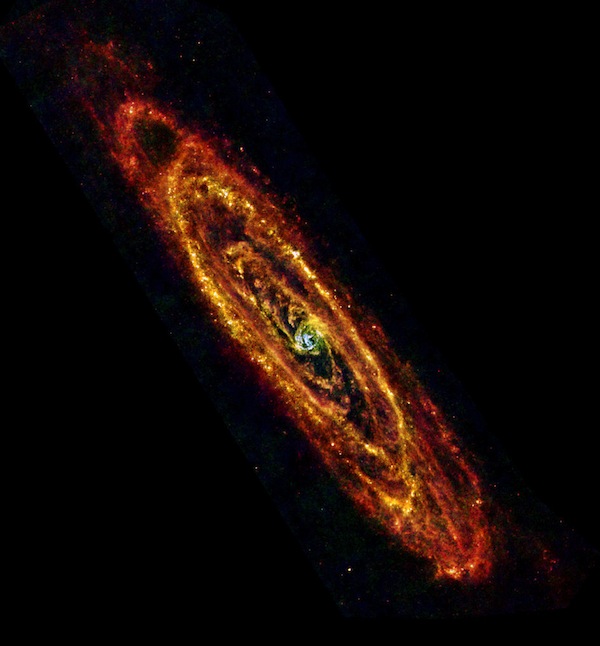
In this view of the Andromeda galaxy from ESA's Herschel space observatory, cool lanes of forming stars are revealed in the finest detail yet. Andromeda, also known as M31, is the nearest major galaxy to our own Milky Way at a distance of 2.5 million light-years, making it an ideal natural laboratory to study star formation and galaxy evolution. Credits: ESA/Herschel/PACS & SPIRE Consortium, O. Krause, HSC, H. Linz
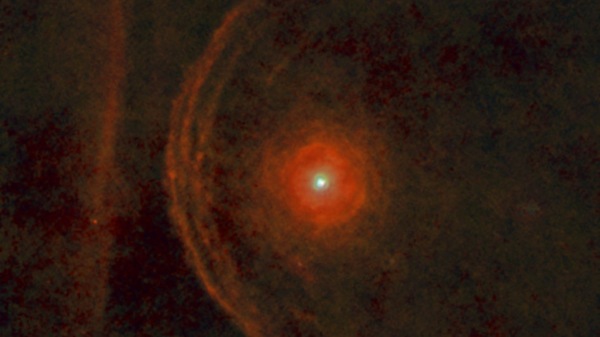
This composite multi-wavelength image of Betelgeuse shows a bubble blown out by the star's stellar wind. The curved band to the left of the red giant star is a bow shock interaction with the interstellar medium. Credits: ESA/Herschel/PACS/L. Decin et al
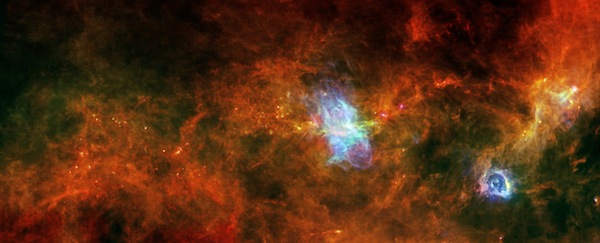
The Vela C region, part of the Vela complex, by ESA's Herschel space observatory. The image demonstrates Herschel's ability to trace both high- and low-mass star formation at a range of evolutionary stages, from cool filaments, pre-stellar cores and protostars to more evolved regions containing dust that has been gently heated by hot stars. Credits: ESA/PACS & SPIRE Consortia, T. Hill, F. Motte, Laboratoire AIM Paris-Saclay, CEA/IRFU - CNRS/INSU - Uni. Paris Diderot, HOBYS Key Programme Consortium
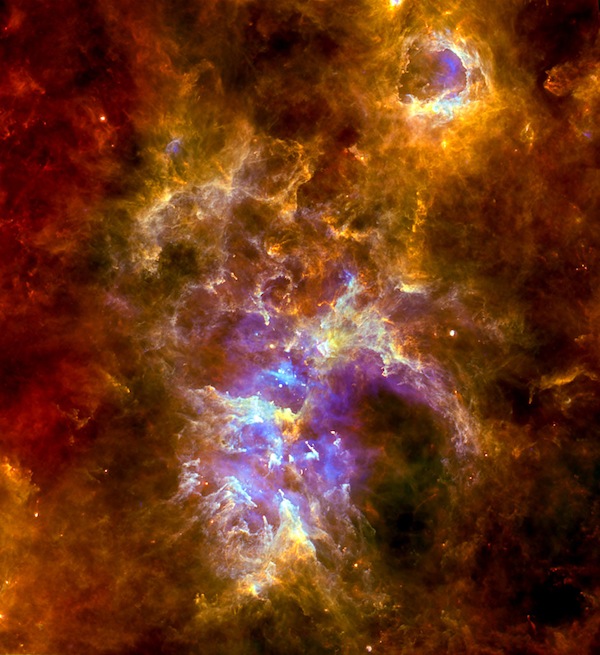
The Carina Nebula, by ESA's Herschel space observatory. The image shows the effects of massive star formation - powerful stellar winds and radiation have carved pillars and bubbles in dense clouds of gas and dust. Credits: ESA/PACS/SPIRE/Thomas Preibisch, Universitäts-Sternwarte Munchen, Ludwig-Maximilians-Universitat Munchen, Germany.
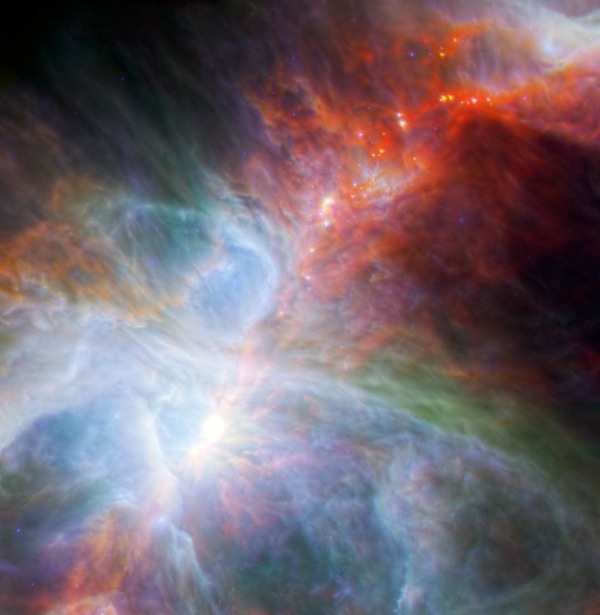
This view of the Orion Nebula shows embryonic stars within extensive gas and dust clouds. Combining far-infrared observations from the Herschel Space Observatory and mid-infrared observations from NASA's Spitzer Space Telescope, the image shows newly forming stars surrounded by remnant gas and dust in the form of discs and larger envelopes. Credits: ESA/PACS/NASA/JPL-Caltech/IRAM
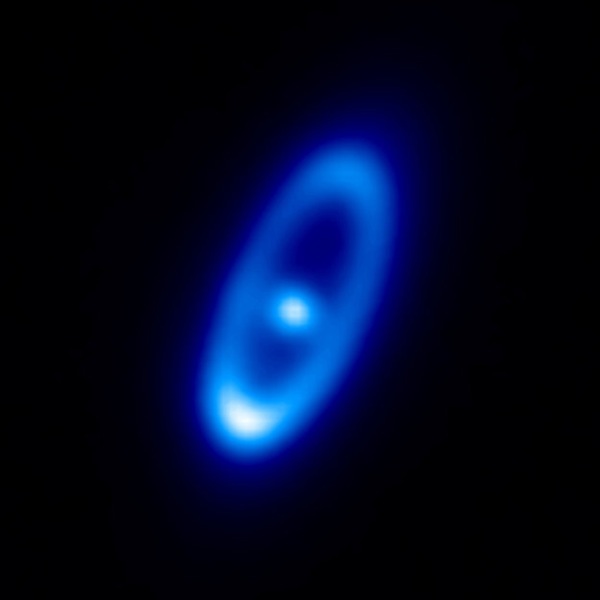
This image shows the infrared emission from the young star Fomalhaut and the dust disc surrounding it, as recorded with ESA's Herschel Space Observatory at a wavelength of 70 micron. To explain the emission from Fomalhaut's debris disc, astronomers invoke a steady production of dust particles via comet collisions, with an average rate of 2,000 daily collisions between comets of one kilometer across or, alternatively, of 2 daily collisions between 10-kilometer-diameter comets. Credit: ESA/Herschel/PACS/Bram Acke, KU Leuven, Belgium
|
|









